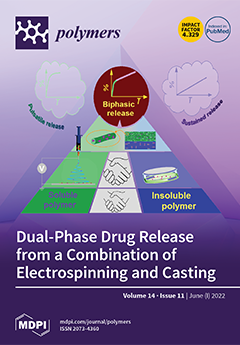In this study, the mechanical behaviors of nano-SiO
2 reinforced geopolymer concrete (NS-GPC) under the coupling effect of a wet–thermal and chloride salt environment were investigated through a series of basic experiments, and a simulation on the coupling effect of a wet–thermal and
[...] Read more.
In this study, the mechanical behaviors of nano-SiO
2 reinforced geopolymer concrete (NS-GPC) under the coupling effect of a wet–thermal and chloride salt environment were investigated through a series of basic experiments, and a simulation on the coupling effect of a wet–thermal and chloride salt environment and SEM test were also included. During the experiments for the coupling effect of the wet–thermal and chloride salt environment, an environment simulation test chamber was utilized to simulate the wet–thermal and chloride salt environment, in which the parameters of relative humidity, temperature, mass fraction of NaCl solution and action time were set as 100%, 45 °C, 5% and 60 d, respectively. The content of nano-SiO
2 (NS) particles added in geopolymer concrete (GPC) were 0, 0.5%, 1.0%, 1.5% and 2.0%. The result indicated that the mechanical properties of NS reinforced GPC decreased under the coupling effect of the wet–thermal and chloride salt environment compared to the control group in the natural environment. When the NS content was 1.5%, the cube and splitting tensile strength, elastic modulus and impact toughness of GPC under the coupling environment of wet–thermal and chloride salt were decreased by 9.7%, 9.8%, 19.2% and 44.4%, respectively, relative to that of the GPC under the natural environment. The addition of NS improved the mechanical properties of GPC under the coupling effect of the wet–thermal and chloride salt environment. Compared to the control group without NS, the maximum increment in cube compressive strength, splitting tensile strength and elastic modulus of NS–GPC under the coupling effect of the wet–thermal and chloride salt environment due to the incorporation of NS reached 25.8%, 9.6% and 17.2%, respectively. Specifically, 1.5% content of NS increased the impact toughness, impact numbers of initial crack and the ultimate failure of GPC by 122.3%, 109% and 109.5%, respectively.
Full article






